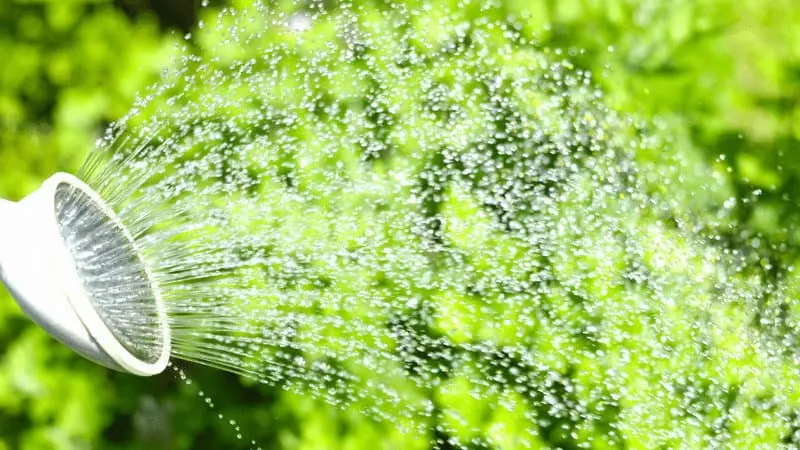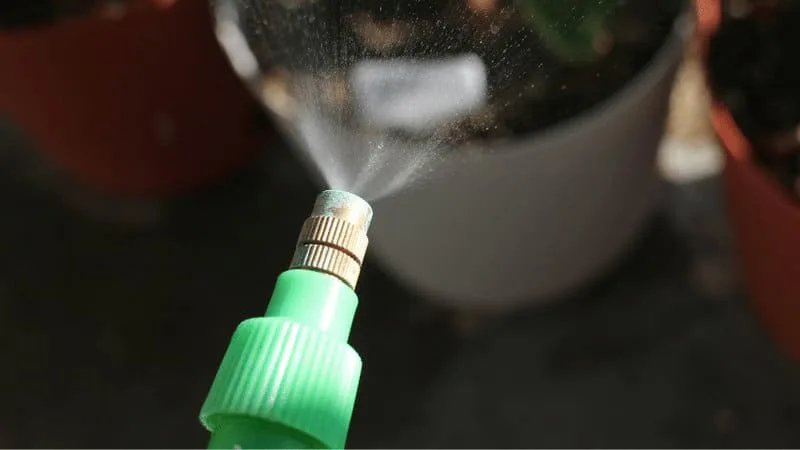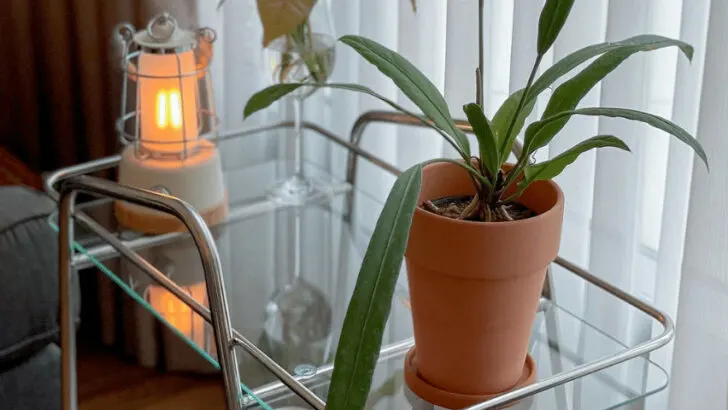This article covers Anthurium vittarifolium. An exotic indoor plant with a vibrant outlook, the Anthurium vittarifolium is a must-have for every plant collector.
I haven’t been a fan of strap-leave Anthuriums for quite a few years. This all changed once I got my vittarifolium.
The bright pendant-shaped, strappy leaves of this plant stand out in your living space and instantly catch the attention of your visitors.
It belongs to the Araceae or Aroid family. Anthurium vittarifolium is native to South America and the tropical rainforests of Brazil, Ecuador, and Columbia.
Having foliage similar to Anthurium pallidiflorum, it bears glossy, velvet-green leaves and beautiful pink flowers.
The leaves grow up to 6.6 feet long (two meters).
Its narrow leaves spiral upwards in a cascading manner, and hence the Anthurium plant grows well in a hanging basket.
Anthurium vittarifolium Care
Anthurium vittarifolium grows in bright indirect light. It prefers warm temperatures around 60.8 to 77 degrees Fahrenheit (16 to 25 degrees Celsius). It grows best in mineral-rich soil, fertilized monthly in spring and summer to meet the plant’s nutrient needs. Growing the plant in a pot with a good drainage capacity is crucial to avoid root rot.

Table of Contents
Vittarifolium Anthurium Care Guide
Soil
With adequate drainage and water retention, well-aerated forest soil serves as the ideal soil mix for the proper growth of Anthurium Vittarifolium.
You must maintain a pH between 6.6 and 7.5. Moreover, a well-drained soil mixture also provides a firm grip on the plant’s aerial roots, allowing sufficient room to sprawl.
In addition, wood chips and macadamia nut shells in the soil mix can further help anchor the plant’s roots.
Furthermore, you can mix some bark and moss in the soil so that your plant can get sufficient nutrients, moisture, and aeration.
Water
Anthurium Vittarifolium has to be watered once every two or three days during its peak growing period.
However, the soil can be left a little dry during the winter season.
Being a thirsty plant, Anthurium Vittarifolium loves moisture.
At the same time, the plant mustn’t be overwatered; else, it will develop root rot.
Moreover, mist the leaves while watering to maintain adequate humidity levels.
It is also crucial to leave the soil dry in between waterings. While pouring the water, make sure not to flood the soil.
Do not soak the soil with loads of water in one go; instead, shower the soil with water droplets consistently for a few minutes.
If you notice your plant’s leaves turning yellow, cease watering for the next few days, and the leaves will automatically regain their color.

Light
Anthurium Vittarifolium has particular light requirements.
It desires exposure to medium to bright indirect light (1500 to 2500 FC).
Note that this plant typically thrives well in the shade.
Hence, make sure to place the plant where it receives at least 70% to 80% of shade.
Avoid leaving the plant in a consistently low light intensity area, as it can severely hamper its growth.
Pay attention to flower production to assess whether your plant is getting sufficient sunlight exposure.
A reduction in flower growth indicates that your plant needs more sunlight.
If you keep the plant indoors, make sure that it receives an ample amount of bright, diffused light.
Temperature
The Anthurium Vittarifolium plant requires a temperature between 60.8 to 77 Fahrenheit (16 to 25 degrees Celsius) to demonstrate healthy growth.
Low temperatures can kill the plant, and it will almost certainly perish.
At the same time, if the temperature is too hot, the plant’s leaves will become dry and shrivel up.
If you observe that your plant is slowly withering, mist your plant immediately.
Adequate moisture will maintain humidity levels and restore your plant’s health.
It is crucial to remember that these plants are susceptible to acute changes in temperature.
Hence, try keeping the plant in a location where the temperature remains stable primarily at all times and does not fluctuate.
Also, keep the plant away from heaters and windows.
Humidity
Anthurium Vittarifolium desires a humidity level of 70% or 80%.
Typically, houses have a humidity of around 40-50%.
However, during winters, the humidity can drop relatively slowly, which can endanger the plant’s growth.
To counter low humidity, mist your plant frequently to ensure it is adequately hydrated.
You can also place multiple plants within the same spot to build a humid microenvironment.
While Anthurium Vittarifolium requires more moisture than typical plants,
it is still important to remember not to overwhelm the plant with excessive humidity.
Too much moisture promotes fungal growth, which can subsequently hamper plant growth.
Fertilizer
Remember to fertilize the soil once every month regarding Anthurium Vittarifolium’s fertilizer needs.
And use slow time-release fertilizers. This is particularly important as the plant’s roots are pretty delicate, and hence, quick-release fertilizers can spoil the roots and kill them.
Maintaining consistency in fertilizing your plant is essential for its healthy growth.
The plant needs to be fed with vital nutrients intermittently for proper sustenance.
Once you have repotted your plant, you can fertilize the soil with the Osmocote fertilizer,
as it will provide the plant with all its essential nutrients.
In addition, low-concentration liquid fertilizers are also good alternatives.

Potting
An ideal pot for growing Anthurium Vittarifolium would have a good drainage capacity to accommodate the plant’s drainage needs.
If the plant is watered in a pot without proper drainage, it will soon develop root rot.
Pots of five, six, and eight inches would be most suitable for growing this plant.
There are only two scenarios when you must repot your Anthurium Vittarifolium.
One is when the plant outgrows the pot and has doubled in size. And two, when a year has elapsed since you first potted the plant.

Pruning
One of the first items on the pruning list is flowers.
Begin cutting out Anthurium Vittarifolium’s tiny flowers to allow the plant sufficient room to grow and propagate.
You can also propagate the plant via seeds by extracting them from the flowers and removing them.
Next, focus on pruning yellow, withered leaves. Be gentle and not harm other healthy leaves in the process.
If your plant is too overcrowded, you can remove healthy leaves to clear some space and make your plant look presentable.
Propagation
There are three specific ways to propagate your Anthurium Vittarifolium plant. Let’s go over each method in detail.
First up is the division method. One of the easiest methods, Anthurium division, involves removing the mother plant from the pot,
wiping off the soil, and separating the roots with a pocket knife. Make sure not to tear the roots.
Search for easily separable roots, and carefully carry out the division process.
One wrong move can cause the whole plant to die.
Plant the roots in different pots, and use the same soil mix and fertilizer as the mother plant.
The second method is relatively straightforward but requires preciseness.
You will need a pocket knife to cut out the mid-line leggy growth of the Anthurium Vittarifolium
and plant it in a new pot while leaving the mother plant in its original pot.
Through this propagation method, you will not only end up with a clone plant,
but your mother plant will also grow new shoots in no time!
Finally, you can also propagate your Anthurium Vittarifolium utilizing seeds.
This approach does, however, have one drawback.
You have the lowest probability of achieving a replica of your mother plants through seed propagation.
Once the flower matures, it grows into a small orange fruit, from which you can extract the seeds.
Plant the extracted seeds in a new pot with a similar soil mix, and soon you will find new seedlings developing.

Growth
The Anthurium Vittarifolium can generally grow up to 7.9 feet (2.5 meters) tall and up to 0.3 feet (10 cm) wide.
Flowers may take up to four years to blossom. The plant has slow to moderate growth.
View this post on Instagram
Anthurium vittarifolium flower
The Anthurium vittarifolium flower consists of a spathe and spadix. The spadix contains hundreds of small white flowers.
When the inflorescence is pollinated, the plant grows pink to violet berries along the spadix. These berries contain seeds. For seeds to grow, the plant needs to be mature.
The inflorescence emerges from a leaf petiole.
Anthurium vittarifolium seeds
Seed pods contain one to two seeds. It takes several weeks for the seeds to sprout. I am removing the outer part (berry) from the seedlings. This way you prevent any mold from building up.
After removing all the flesh, I usually let the seeds soak overnight in tea. Tea contains essential nutrients.
I then transfer them into a medium: Spaghnum moss, stone wool, and perlite. Make sure that the humidity is very high. 70-90%. This can be achieved by putting the seeds into a container or enclosing a cup using saran wrap.
It can take several days up to 2-3 weeks, for the seeds to germinate. Make sure the potting medium stays moist but never soggy.
Anthurium vittarifolium seedlings
The seedlings do not resemble mature plants yet. Using seeds, I was able to grow hundreds of offspring. Once they developed the first true leaves, they resemble the mother plant more and more. The leaves get larger and pendent.
Use a spraying bottle to keep the moss humid.
This way, the seedlings will grow quickly.
You can transplant the seedlings once they grow their first true leaves. But be careful, as seedlings are very fragile. Also, when moving them from a high-humidity environment, please do not put them into the open immediately.
Lift the lid a bit more every day before doing any transplanting. The seedlings need to be adjusted to different humidity levels and temperatures.
Anthurium Vittarifolium Diseases and Pests
Blight
For Anthurium Vittarifolium, blight disease is one of the worst diseases the plant can contract.
The ‘Anthurium blight’ is caused by bacteria, typically when the plant is grown in an excessively humid environment.
The onset of the disease is characterized by the appearance of yellow spots, which slowly spread out and engulf the whole leaf.
As of yet, there is a known cure for the disease.
There are speculations regarding the benefits of certain oils and fungicides, but proper treatment is yet to be established.
Anthurium blight is a deadly disease that should be taken seriously.
The easiest way to avoid developing the condition is to follow preventative measures.
Avoid overwatering your plant or placing it in an overly humid area.

Pests
Anthurium Vittarifolium is susceptible to pest attack.
Pests including mites, snails, worms, thrips, slugs, and white flies commonly attack the plant and feed on its leaves and flowers.

To avoid pest attacks, clean your plant daily.
Make sure to wipe the leaves with a clean cloth, and watch out for any breeding insect communities near the plant.
If you find pests habituating your plant, spray an insecticide or soap and water solution.
Alternatively, you can cut off the infected leaf and dispose of it with the insect.
You may prevent insect attacks from spreading throughout the plant this way.

Tips for Growing Anthurium Vittarifolium
- It is critical to water the plant during its growing period frequently; however, overwatering should be avoided as it can contribute to root rot.
- Anthurium Vittarifolium should be grown in an adequately shady area, with sufficient exposure to indirect light.
- The plant’s soil should be fertilized occasionally to receive all essential nutrients for its healthy growth.
- Prune the flowers on a routine basis to help the plant propagate.
Anthurium pallidiflorum vs vittarifolium
These two plants look very similar. They both have pendent strap-leaves. They are both Aroids and epiphytes. The main difference is the width and texture of their leaves. Anthurium pallidiflorum has more velvety leaves and a deeper green. Anthurium vittarifolium has narrower and brighter green leaves. The leaves are also shinier.
Is Anthurium Vittarifolium toxic?
Anthurium vittarifolium is a toxic plant. Hence, preventing oral contact with the plant’s leaves or stems is critical. Also, keep your children and pets away from the plant as well. If someone ingests the plant’s leaves, instant symptoms are a pain in the mouth, tongue, and throat.
Frequently Asked Questions
Why are the leaves of my Anthurium Vittarifolium turning yellow?
Anthurium Vittarifolium’s leaves may turn yellow because of overwatering or underwatering, inconsistent fertilization, pest infestations, and humidity or temperature issues.
What is the Anthurium Vittarifolium plant’s life expectancy?
Generally, Anthurium Vittarifolium plants last five years or even more. If properly cared for, the plant can live for many years.
Why does my Anthurium Vittarifolium plant have tiny black spots?
Black spots are a classic indication of blight disease. Blight is caused by bacteria that feed on the leaves, causing them to develop yellow-brown spots, which over time, turn black. The reasons are too much humidity, cold drafts, too much sun, insufficient lighting, or little to no drainage.
Conclusion
Anthurium Vittarifolium care requires bright indirect light, well-draining soil and frequent watering about once a week.


